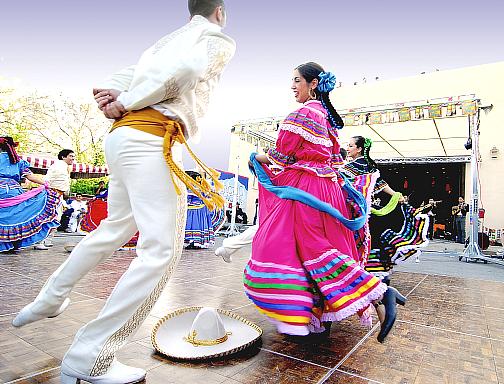Mexican 'Corrido' Music Becomes Anthem for Drug Traffickers, Film Shows
Drug trafficking in Mexico has been cause for concern for many decades. Recently, the Mexican drug cartel has begun to utilize music to promote their cause. Many people are familiar with corridos, which are traditional Mexican folk ballads generally played by 'banda' groups consisting of tubas, trumpets, accordions, and guitars. 'La Cucaracha' is a common corrido that most people are familiar with.
Today many groups are creating a new type of music called narcocorridos that glorifies the drug trade. It's attracted much attention in Mexico because this music type portrays drug lords as 'Robin Hoods' of Mexico. Drug cartel leaders are providing many of the funds for these narcocorridos to be produced. Mexico and the U.S. have showcased concerts featuring this new type of music not because they want to promote the drug wars per se, rather it's the music people want to hear and are willing to pay for. Because the music is so widely praised and accessible, much of Mexico's youth now say they want to become famous narcos or have narco boyfriends. The influence of the narcocorridos on Mexican youth is quite strong as opposed to the U.S. where people know they have another alternative than drug trafficking.
This article for me was really interesting. I'm quite familiar with 'banda' groups and traditional corridos, but I was not aware that it was being used as drug trafficking propaganda. This story reminded me of the film 'Favela Rising' that we watched in class, only reversed. In the film, Afro-Reggae sprouted as a means of saving individuals from a life of drugs and ultimately a young death. In Mexico, it is quite the opposite. Narcocorrido music is being used as a means of recruitment to the drug cartel--glorifying the life of a drug lord; whereas, Afro-Reggae speaks out against drug trafficking and the harsh reality of the drug cartel. To me it's rather fascinating how music can be utilized in such vastly different ways. Both Afro-Reggae and Nacrocorridos are being used to successfully 'unite' individuals to a common cause; however, these causes are starkly different!
Monday, September 16, 2013
Monday, September 9, 2013
Jarabe Tapatío--Mexican Hat Dance
This image depicts a traditional dance of Mexico known as the Jarabe Tapatío or more commonly, the Mexican Hat Dance. The Jarabe Tapatío originated in the state of Jalisco as early as the 18th century. Prior to the War of Independence, the dance was banned because it was seen as defiant to Spanish authorities and morally offensive. The dance grew in popularity following the War of Independence; it was a uniting force for the Mexican people. With it's growth in popularity, it became the "national dance" of Mexico. It is a symbol of the Mexican people and their culture both inside and outside the country. The Jarabe Tapatío was introduced to the world after the famous Russian ballet dancer, Anna Pavlova, made it a permanent part of her dance repertoire. This dance is still taught to school children in Mexíco today.
The dance signifies the courtship between a man and woman. At the start of the dance, the woman rejects the man's advances, but as the dance progresses, she willing accepts his gestures. The man and woman are dressed in traditional Mexican garb. The large flowing dresses the women wear is known as the "China Poblana," and the dress of the men is that of charros, or what we would call Mexican cowboys.
I have seen this dance performed on several occasions and performed it once myself many years ago. I can't help but start moving when I hear the familiar tune of the Jarabe Tapatío. This dance represents my culture, and more importantly, where my family comes from...Jalisco! (I have also included a video of the dance.)
Subscribe to:
Posts (Atom)
